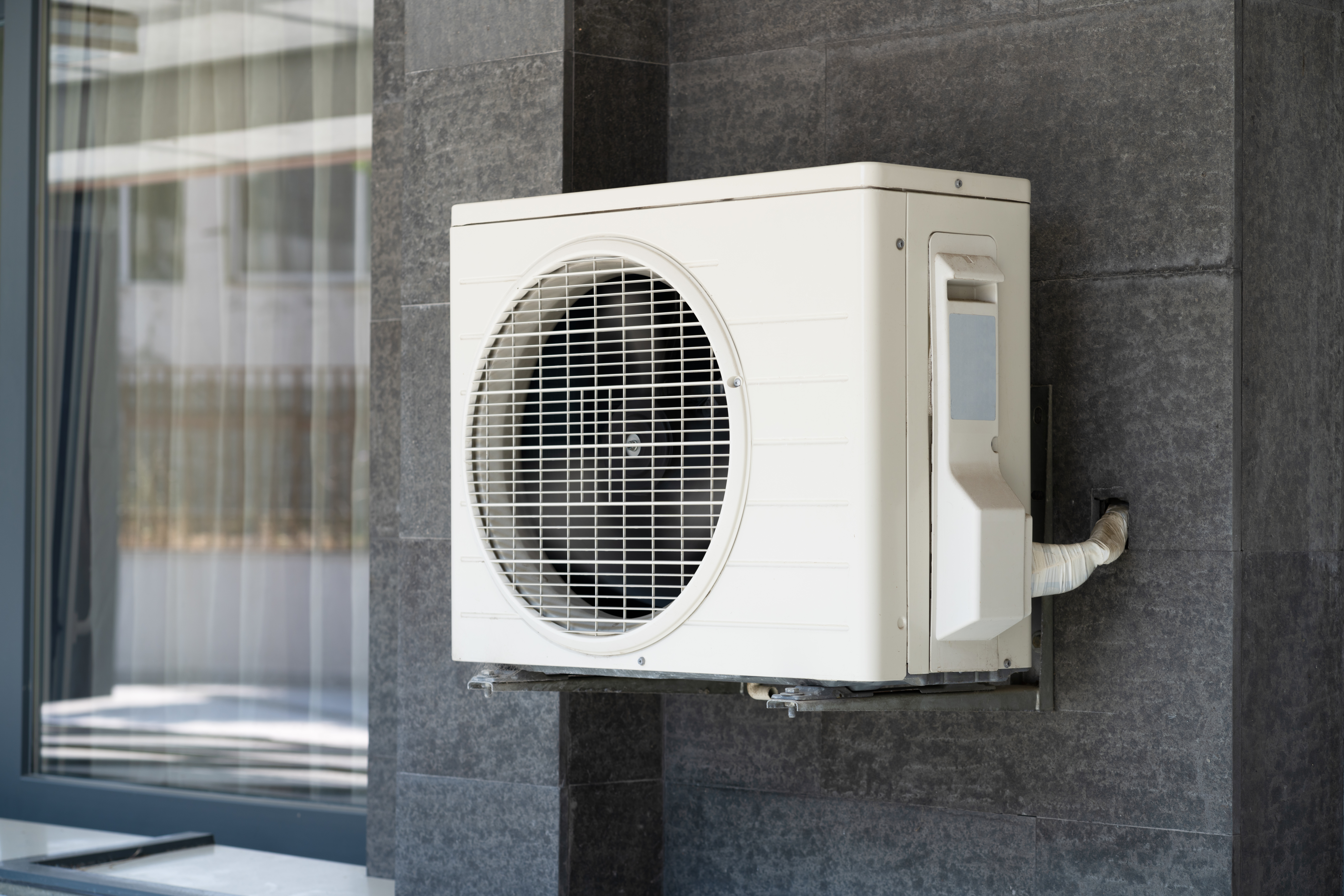If you’re looking to add air conditioning to your home, you may have the option to choose either a central AC system or ductless air conditioning. Either system can be a good choice in different situations, but it can also depend on what type of existing HVAC system you have and how much you want to spend. To help you determine what the better option is, this article will explain everything you need to know about ductless air conditioning and how it compares to central air.
How Ductless Air Conditioning Works
Most central air conditioning systems are also split systems. This means that part of the system is outdoors (the AC condenser) and part of the system is indoors (the blower and evaporator coil). Ductless air conditioning systems are usually referred to as ductless mini-splits since they also have indoor and outdoor components. The outdoor part of the system is either a traditional AC condenser or a heat pump. The indoor part is an air handler unit that houses both an evaporator coil and a fan. If the system has a heat pump, it can provide both air conditioning and heating.
Mini-splits are either single-zone systems with one air handler or multi-zone systems with anywhere from two to eight air handlers. The primary difference between a ductless system and central air conditioning is that each ductless air handler works independently and cools only the room or space it is in. Other than that, both systems use refrigerant to remove heat from the air inside and transfer the heat outside.
In a ductless system, you can turn each air handler on and off or turn the temperature up or down without affecting the rest of the system. This gives you much greater control over your home’s temperature compared to a traditional central air conditioning system. You can also save on energy by turning the temperature up in unoccupied parts of the home or just shutting the air handlers in any unoccupied areas off.
Ductless Air Conditioning Pros and Cons
A ductless mini-split system has some great advantages compared to central AC. By being able to control the temperature in each room or area, a ductless system makes it easier to keep your home comfortable at exactly the temperature you desire.
Another major advantage of ductless AC is that most systems are far more energy efficient than central AC systems. With either ductless or central AC, the system’s SEER rating tells you how energy efficient it is. Any system installed in Maryland and throughout the northern US must be at least 14 SEER. There are some central ACs that are over 20 SEER, but most are somewhere between 14 and 18 SEER. On the other hand, almost every ductless mini-split system is above 20 SEER. Some manufacturers like Carrier even produce mini-splits that are as high as 42 SEER, whereas Carrier’s most efficient central AC is only 26 SEER.
The reason that ductless AC is so efficient is that it doesn’t rely on ductwork to circulate and transport warm and cool air. Air ducts are a major source of energy waste since the ducts in many homes have lots of air leaks. Leaky ductwork can often result in a central AC system wasting 20-30% of the energy it uses. Even if the ducts are properly sealed, the cool air produced by the system tends to gain heat as it travels through the ducts. This is another reason why central AC systems aren’t as efficient.
Another area where ductless AC systems have a major advantage is life expectancy. Central AC systems have an average lifespan of around 15 years, but ductless systems will typically last for 20 to 30 years.
The biggest drawback to ductless systems is that they can be quite a bit more expensive than a central AC system. Ductless systems are fairly easy to install, but the initial cost will still be quite a bit more in most cases. This isn’t necessarily true for a single-zone or smaller multi-zone system. It will almost always be the case if you’re installing a larger system capable of cooling your entire home.
Another thing to note is that larger homes will usually require more than one mini-split system. The reason is that the outdoor condenser or heat pump can only effectively pump the refrigerant in the system up to a certain distance. As such, most systems require all of the indoor air handler units to be within 75 to 150 feet of the outdoor unit. The maximum number of air handlers the largest mini-split system can support is eight. This also means you’d need more than one system if you have more than eight areas or rooms you need to cool.
How to Choose Between Central and Ductless AC
If your home already has central air and you just need to replace the existing system, you’re typically better off sticking with a central system. Even though a ductless system will last longer and cost less to operate, just replacing your existing central AC will cost you far less upfront. That said, installing a ductless system may be the more cost-effective long-term option for smaller homes.
The type of heating system your home has can also make a difference in terms of whether central or ductless air conditioning is the better option. If your home has a ducted central heating system, on the other hand, and you’re simply looking to add AC, central air will cost much less.
Ductless systems are ideal for homes that have radiant heating since most homes with radiant heating don’t have an existing ductwork system. If your home doesn’t already have ductwork, installing a central AC system will cost much more. This is because you’re usually looking at spending at least a few thousand just to install all of the ducts. You’d also need to do lots of renovations to accommodate the ducts. That is if there is even sufficient available space in the home for the ducts, which often isn’t the case.
There are also more and more homeowners who are choosing to combine a ductless AC system with their existing central air system. Many homes have one or more rooms or areas that tend to be hotter than the rest of the house. This due to there being lots of windows or skylights or for some other reason. In this situation, a ductless system is a great way to overcome the issue and ensure that the room or rooms stay cool and comfortable.
Installing a ductless system is also the best choice if you’re putting a larger addition onto your home. When adding onto your home, you will almost always need to replace your existing central AC system with something larger or else it won’t work effectively enough. In this case, installing a ductless system to cool the addition instead will cost less upfront and also cool it for less money.
Trust the Professionals
If you want to install ductless or central air conditioning in your home or commercial property, you can turn to the experts at Markool Heating & Cooling for help. As a Carrier Factory Authorized Dealer, we offer some of the best, most efficient central and ductless ACs available. Our team is also ready to help if you need AC repairs or maintenance or any heating or indoor air quality service in Frederick. For more information on your options for central or ductless AC installation, contact us today.






